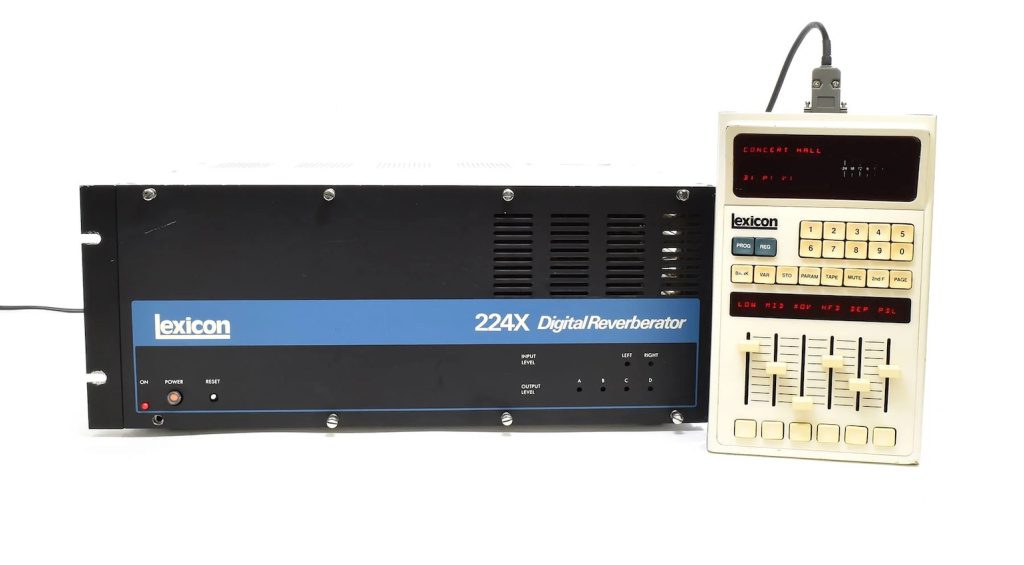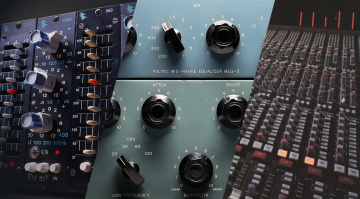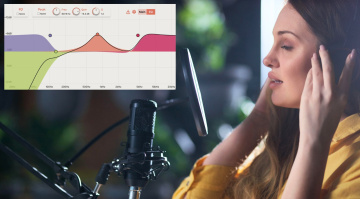Reverb Pre-Delay Techniques: Learn to Play with Space
We explore a range of different reverb pre-delay techniques for adding clarity and depth to instruments in your mixes in any style of music.
Reverb Pre-Delay
Easily one of the most powerful effects in music production, reverb gives sounds a spatial context that can add detail or realism to the overall feel of a recording. However, without understanding reverb processing parameters, we only scrape the surface of its true sonic potential. The pre-delay time control is often misunderstood, but it can be a powerful tool once you get the hang of it.

Although we can shape reverb’s spatial characteristics and reflective behaviour with the decay, diffusion, and damping controls, pre-delay determines the onset of the effected signal. Because reverb is a time-based type of processing, this is a crucial tool that can be used to increase the size of a sound in the mix or add expression without losing the magic of the original performance.
Reverb Pre-Delay Techniques: What is Pre-Delay?
When we add reverb to a sound (dry signal), we introduce reflections (wet signal) based on the original signal. Pre-delay is the time gap between the unprocessed input signal and the initial reflections. In the physical world, this represents the distance between a sound source and the walls of a room. When shaping reverbs, pre-delay determines the interaction between the transient and reverb tail.
If you’ve ever been to a squash court, the sound you hear is so distinctive that you can actually judge the velocity of a shot through the space between the sound of the racket hitting the ball and the sound of the ball rebounding off the court wall. With the correct use of a pre-delay control, we can emulate the same velocity effect. This way, we can transform a dry snare drum sample, giving the listener the impression that it was the drum was struck at a velocity level of our choosing in a room of our own specifications.
By using pre-delay, we can:
- Improve clarity on vocals and featured instruments
- Separate complex rhythm parts
- Emulate acoustic environments
- Avoid premature washout
- Give a song’s core groove elements an ambient quality
Basic time ranges:
- 0–10 ms: tight and immediate
- 10–40 ms: natural realism
- 40–120 ms: added rhythmic expression
- 120 ms+: for cinematic sound design
Reverb Pre-Delay Techniques for Music Production:
We’re looking at different techniques that can be applied to different elements in your mix:
Reverb Pre-Delay Techniques: Vocal Clarity (20–40 ms)
In vocal production, the use of pre-delay is immediately effective for achieving clarity. If we don’t apply pre-delay, even a small amount of reverb can reduce the definition of vocal consonants within a performance. By using a pre-delay time of between 20 and 40 ms, we can create a space for the listener to easily distinguish vocal nuances before the bloom of the ambient component.
How to use it:
- Use a hall or plate reverb in parallel (on an aux send)
- Start with a pre-delay time of 20 ms and a decay time of between 1.5 to 2.5 seconds
- Now, increase the pre-delay time until you feel the vocal jump forward in the mix
- Listen carefully to the consonants. If the clarity and definition improve, you’re on the right track
This technique is important for use in dense mixes and in any music genre where vocal intelligibility is essential, such as Pop, Hip-Hop, R&B, and EDM.
Pro Tip: To match the feel of the verses and choruses in a song, you can automate the pre-delay: shorter time values for spare, intimate sections and longer time values for more expansive and powerful vocal moments. Rather than adjusting a reverb’s decay time, riding the pre-delay time gives vocals a more natural sound, as if the vocals are breathing in the space.
Reverb Pre-Delay Techniques: Tempo-Syncing
Reverb pre-delay time is particularly effective when it is aligned transparently with the BPM of your track. This way, the reverberated signal becomes an additional complementary rhythmic layer by using note grid divisions like 1/4, 1/8, 1/16, 1/32, as well as triplet and dotted variations. The reason it works is that the ambience hits in time with the groove, becoming a cohesive element rather than a random wash of sound.
How to use it:
- If your reverb plugin doesn’t have tempo sync, use a delay-time calculator
- Choose a value that makes sense in the context of the rhythm or phrasing
- For a 120 BPM track 1/16 note pre-delay setting = 125 ms
- Start with the exact value and make minor adjustments (±5 ms) according to the performance
This technique is effective for:
- Vocal reverb in dance and electronic music
- Pop and rock snare drum reverb
- Ambience for synth plucks or stabs
- Percussive loops and claps
Pro tip: Don’t use the same note increment for every instrument. By using a 1/8-note pre-delay on vocals and a dotted 1/4-note on a synth stab it creates a sense of rhythmic and spatial interplay within your song.
Reverb Pre-Delay Techniques: Creating the Illusion of a Large Space
With a longer pre-delay time, we can build the sonic impression of a wide, expansive hall that doesn’t overwhelm the instrument with reverb. It creates a simulation of sound reflecting back from a great distance, while the decay time determines the sustain length of the ambient space.
Setting suggestions:
- Pre-delay time: 80-120 ms
- Decay time: 1.0-1.8 seconds
- Diffusion: moderate
- High-frequency damping: Slight damping for added realism
This technique works with:
- Piano recordings
- Vocal ballads
- Pads, ambient sfx, and soundscapes
- Ambient guitar sounds
When we separate the size of a reverb from its degree of “wetness”, we can create a wide, cinematic sound without reducing the level of clarity and detail of our overall mix.
Pro tip: To exaggerate the spatial character, try sparing use of modulation depth or a slight stereo width increase. A long reverb pre-delay time combined with evolving modulation builds a dramatic ambient space that won’t interfere with other elements in your mix.
More about Reverb Pre-Delay Techniques:
*Note: This article about Reverb Pre-Delay Techniques contains affiliate links that help us fund our site. Don’t worry: the price for you always stays the same! We will receive a small commission if you buy something through these links. We appreciate your support!



 4,0 / 5,0 |
4,0 / 5,0 | 



